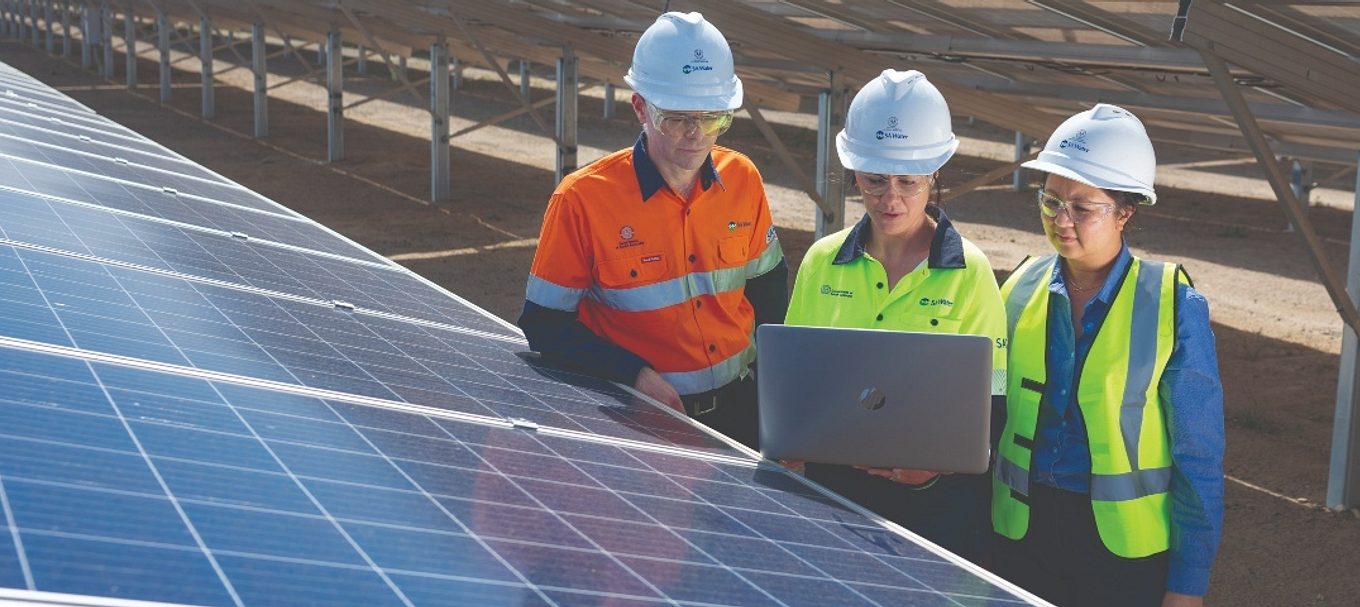
Unpacked: South Australia’s plan to reduce greenhouse gas emissions
You might have heard on the news that a climate change action plan was recently released by the state government.
The action plan outlines actions that will help build a strong, climate smart economy, further reduce greenhouse gas emissions, and support South Australia to adapt to a changing climate.
It talks about two greenhouse gas emission reduction goals: a 50% reduction on greenhouse gas emissions by 2030, based on what the levels were back in 2005, and achieving net zero emissions by 2050.
It also focuses on growing climate smart and low emissions industries, creating new jobs and attracting additional investment, particularly to regional areas.
But what will this look like?
We don’t have to stare into a crystal ball to find out. Thanks to SA being at the forefront of renewable energy production and the innovation of a number of businesses across the state, the future is already taking shape.
What will be done to reduce emissions?
SA has already made great progress in renewable energy with about 56% of energy generated in 2019 from renewable energy sources. In fact, 1 in 3 homes across the state has rooftop solar and there is increasing solar uptake by businesses.
Under the government’s new climate change action plan, work will continue to build a renewable energy economy – with a goal of reaching 100% net renewable energy by 2030.
To achieve net zero emissions for the state, we also need to reduce emissions in other sectors such as transport, agriculture and waste, and to offset emissions by storing carbon in plants and soils.
The government is supporting investment in a statewide electric vehicle charging network, and in smart charging for electric vehicles to reduce power and fuel bills and support the electricity grid.
The government is also committed to walking the talk and reducing its own emissions. For instance bringing water to households and properties across the state takes a lot of energy but SA Water is rising to the challenge and working towards a zero cost energy future.
They’re installing around 500,000 solar panels which equates to planting 7 million trees or removing more than 32,000 cars from the road for every year of operation.
When it comes to tackling the greenhouse gas emissions for the agricultural sector, the great news is that there are a number of existing projects and opportunities, like:
- using seaweed to reduce livestock methane emissions
- capturing biogas from wastewater to generate renewable electricity.
What’s that about being climate smart and things looking up for the regions?
Small businesses and not-for-profit organisations will be supported to improve continuity planning and build resilience to climate change, natural disasters and adverse events, with the new program to be first piloted in Kangaroo Island and the Adelaide Hills.
Much of the infrastructure, buildings and urban design that we build now will still be in place in 2050 or beyond and will need to be safe, functional and relevant in a climate and economy very different from today. The action plan includes a range of actions to make these structures lower emissions and climate resilient.
Greening and cooling the urban environment to tackle the so-called heat island effect is also a priority.
Figures show that irrigated green spaces are, on average, three to five degrees cooler compared with non-irrigated spaces. Over time, the aim is to increase tree cover by 20% in metropolitan Adelaide, creating cooler, greener and more walkable neighbourhoods.
And do you remember the Cool Road Adelaide project? Three heat-reflective road treatments were tested at Bowen Street West, near the Adelaide Central Bus Station and the great news is that treatment made the road cooler by more than 8 degrees.
The findings of this trial will now be used to inform future cooling programs across South Australia.
What about the part about adapting to a changing climate?
We’ll adapt by taking actions across a number of different areas, including making buildings more climate smart, planting more trees in our urban areas and looking at ways to reduce the risks of more frequent extreme weather.
As the climate changes, natural hazards such as heatwaves, bushfire, drought, storms and floods are projected to become more frequent and severe.
The action plan also talks about how to assist communities to reduce risk, adapt and build resilience to more extreme weather events.
What are the next steps?
The South Australian government will work with industries, businesses, communities, local government and the Australian Government to implement the Action Plan and to take their own action.
To keep the government’s plan on track, the Premier’s Climate Change Council, an independent advisory body to the state government, will monitor and review the plan’s roll out.
The state’s progress in reducing emissions will also be measured and publicly reported drawing from data produced by the Australian Government’s national greenhouse gas inventory.
What can I do?
Look for everyday ways you can reduce your emissions – this could include changing the way you travel, using power in your home more efficiently, investing in renewable energy, buying low emissions products or recycling.
But you can also find out more about what could be next for SA by reading the South Australian Government Climate Change Action Plan.
Ready for some more in-depth reading? You might like some of the other stories about taking action on climate change in our ‘Unpacked’ series – including an explanationofProfessor Garnaut’s report on South Australia’s climate change challenge and opportunity.





